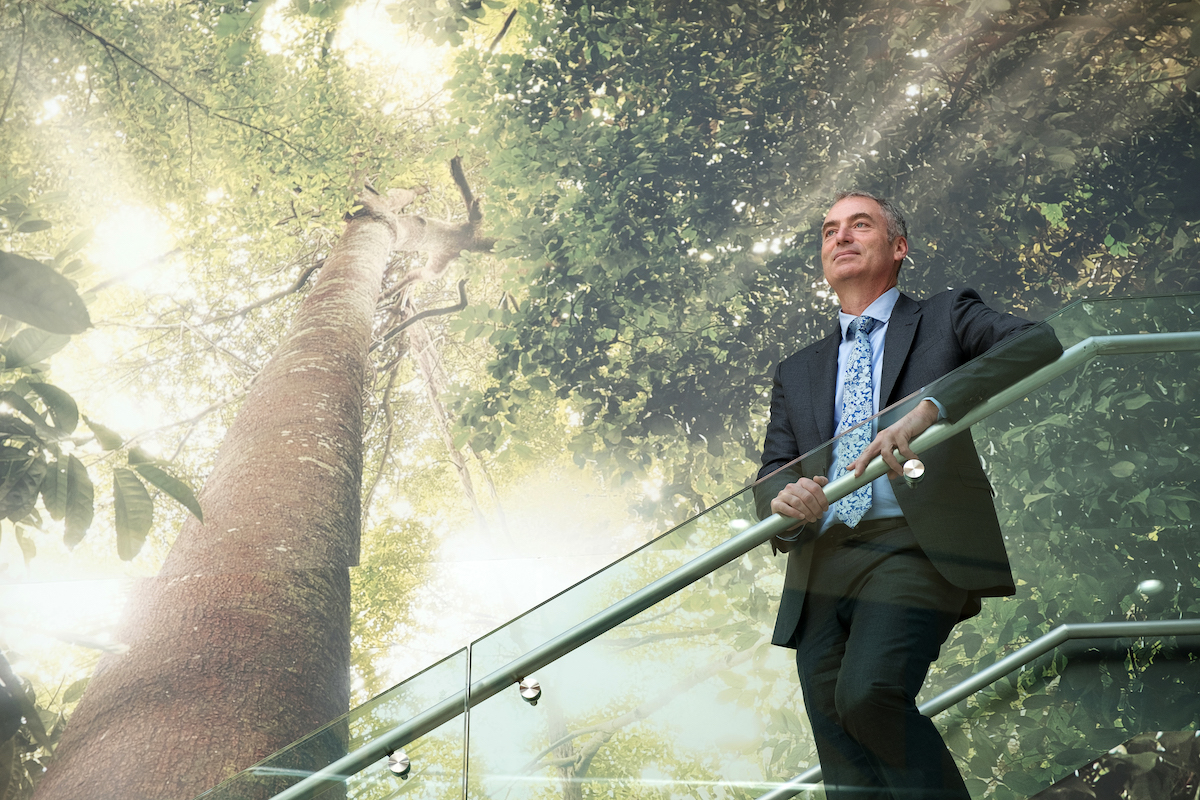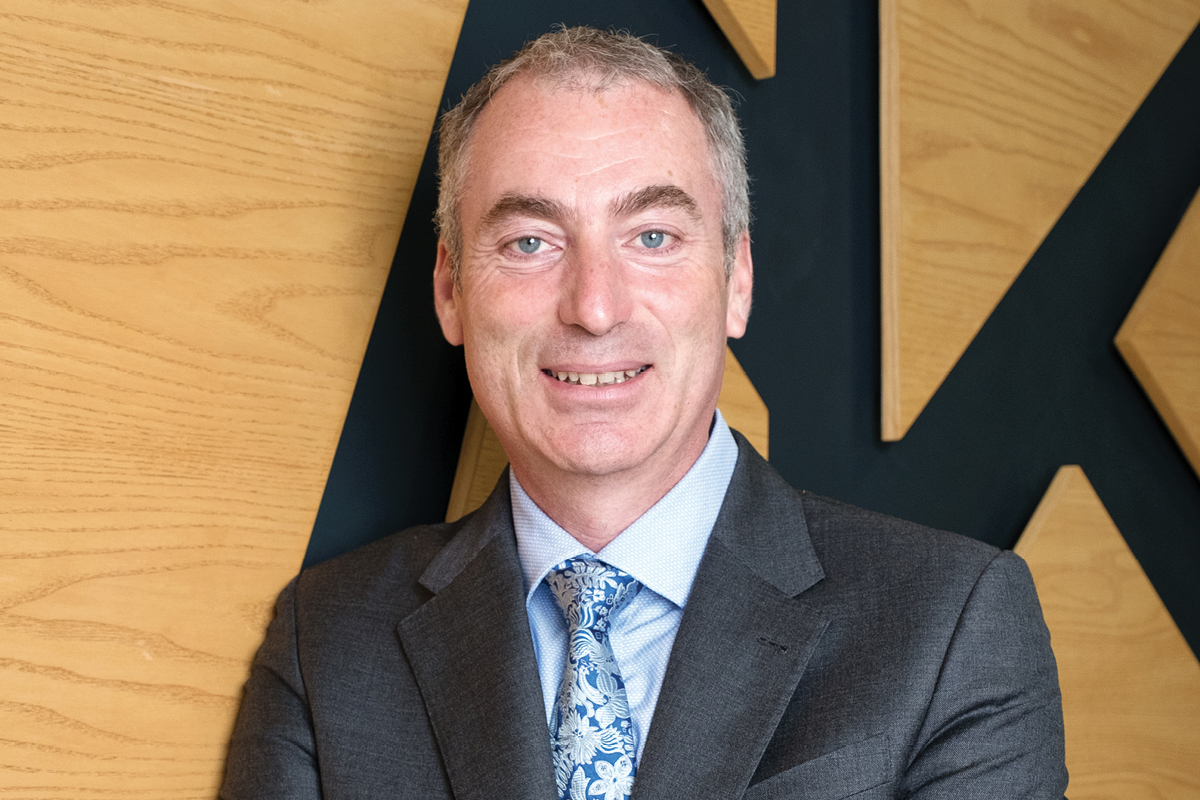On 23 May, the array of distinctive and popular Asia–Pacific flavours turned up the intensity dial when global leader in flavours and fragrances Symrise unveiled its new Flavor Innovation and Technology Centre in Singapore. While on a base level the centre is described as a hub for expanding regional food-manufacturing capabilities, the work that goes on inside is something much more remarkable.
Within the €30-million structure sits level upon level of delicious flavour creations being blended, adjusted, and then tested by visiting customers or clients. One imagines groups of taste engineers slaving over the distinct spices for a perfect roast chicken, while the floor below is busy concocting the perfect blend of citrus and mint for a new, refreshing soft drink.
Above, a focus group on the Sensory Science floor is sampling the latest creations, as the decision-makers look on from behind two-way mirrors, observing interactions with the product and scribbling down notes.
Lionel Flutto introduces the future of flavour
Though seemingly just another silhouette along Singapore’s crowded skyline, this new centre houses the future of flavour. Telling us about the recent development, Symrise’s President of Flavor Asia–Pacific Lionel Flutto says the key to its success is not the concrete willpower of those perfecting the ingredients, but good ventilation.
“What was most critical in building the new centre was high-tech ventilation, which was quite a feat of architecture and construction. We need to have very clean air on every floor so that each separate laboratory can work on their own thing without being compromised by chicken smells from level three,” Lionel explains.

Ever the considerate company, Lionel says, the Symrise centre includes changing rooms so that those technicians who do spend all day absorbing the aroma of the perfect roast, or something equally tantalising, are able to change into fresh clothes so they don’t take the fragrance home with them.
“We think of the building as a path to true connectivity. It’s really about putting everybody – staff, clients, partners, and so on – under the same roof, which is quite different to what we had before,” adds Lionel. “We’re also adding a full level for consumer insights. By inviting consumers on site to interact with the products, we can go one step further in really decoding the sentiment around a specific product or taste.”
A flavour veteran
Singapore was selected as the best location for the centre, not just because of its reputation as an innovative region but also because of a shift in trends where, rather than Western influences enticing Asian taste buds, today it is a complete reversal.
“The model has flipped. Whether it’s ramen going to the US, Korean barbecue going to Europe, or Indonesian satay going to Latin America, Asia is now leading the global food trends. With the large population here, plus the creativity and diversity of food, Asia is an endless source of inspiration,” says Lionel.
A trained plant physiologist originally hailing from Paris, today Lionel is quite a flavour veteran, having worked in practical and administrative duties across key ingredient categories like pectin, emulsifiers and hydrochlorides. Having worked out of France, the US, Denmark, Australia and now Singapore, Lionel joined Symrise as commercial vice-president for South Asia in 2015, eventually adding Japan and Korea to the mix. He was then appointed president for Asia–Pacific earlier this year.
“It’s been an extremely hectic start with the opening of the new building, but we’re getting on top of it,” he says. “I want to keep developing the commercial front of our business. I think we’re very strong technically, and it’s great to have a beautiful technical engine, but at the end of the day we also need a beautiful commercial machine to make sure that our products work in the market.”
Symrise values “the joy of authentic food”
Lionel says that this can be achieved through partnering with multinationals, introducing strong key account management with local players and multinationals, and continuing to demonstrate a unique understanding of what consumers want.
“Understanding the consumer is not easy. It’s a science in itself, to really decode what they’re saying. But then it’s even more challenging to connect that feedback with a flavour profile or fingerprint, then take that and design a flavour that is actually going to win favour with the consumer,” he says.
We really work on the authenticity, or what we call ‘the joy of authentic food’.
“We have designed a space to support a healthy dose of creativity. Flavour sits at the crossroad of science and sensitivity. There’s a lot of chemistry involved, but it also requires the human touch to understand the consumers when they say, ‘I want it a bit juicier.’ What does that mean for chicken? What does that mean for lemon? Why do they want it that way?” asks Lionel.
“At Symrise, we really work on the authenticity, or what we call ‘the joy of authentic food’. For me, that sentence captures the emotional side of food, of what makes the chicken just right, like your grandma used to make it. Bringing that joy to people is extremely rewarding, but also extremely challenging.”
Strong creativity that combines science and humanity
While Lionel’s own favourites include traditional French flavours like boeuf bourguignon – albeit with fierce competition from Asian cuisines like Thai or Japanese – the challenge is connecting with different consumers from around the world, with their backgrounds, their preferences, and sometimes even taking them by surprise.
“We have a Bangladesh product brief for a salted green mango masala soft drink that you and I probably think sounds very strange. But it’s that creativity that keeps the markets ticking and the consumers excited.” It all comes down to getting the right talent though, says Lionel, which is an ongoing challenge for Symrise, as the depth of understanding can only be reached through strong creativity that combines science and humanity.
“The company has grown very fast, so getting enough of the right people on board to support that growth is essential,” says Lionel. “While we have good diversity when it comes to race, religion and gender, I think we need to take more risks and have more diversity of industry experience. That alternative thinking can bring new ideas to the table, foster change, and keep us agile.”
While staff can extend from traditional business leadership roles to practical technicians such as savoury and sweet flavourists, chefs, application technicians and marketing experts, and even though digital capabilities are important, Lionel says that Symrise’s workforce shouldn’t fear automation.
“For us, real talent cannot be replaced with a machine. I know right now there’s a lot of talk about AI and getting computers to do more, but the required curiosity and the emotional connection is essentially human.”



